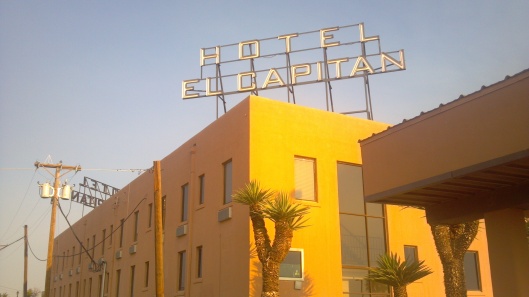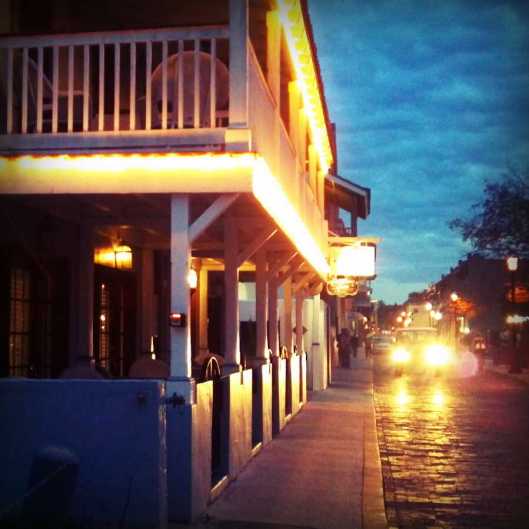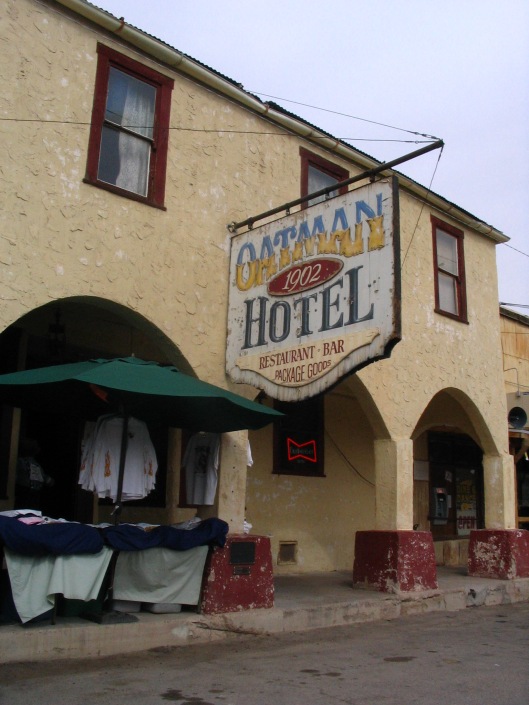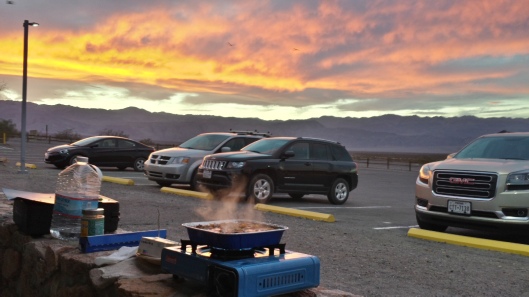I love a good road trip. Far, near, don’t care. Few hours down to the Keys, out into the Everglades, up to the lakes region or further north, across the desert, wherever. Road trips can get pricey, though, if you’re eating every meal in restaurants and sleeping in fancy hotels every night. Being all vegetarian and mostly vegan (I’d happily eat vegan every meal, but if I do eat out, I don’t get too picky about what’s in the bread or throw a tantrum if they forgot to leave off the cheese), sometimes getting a meal in a restaurant is a challenge anyway, so it’s easier to make my own.
So, here’s 5 ways to decrease your budget on road trips:
-
Bring some or all of your own food and make use of rest stop picnic tables, public parks, ferries, beaches, campgrounds, or just your car for preparing and dining.
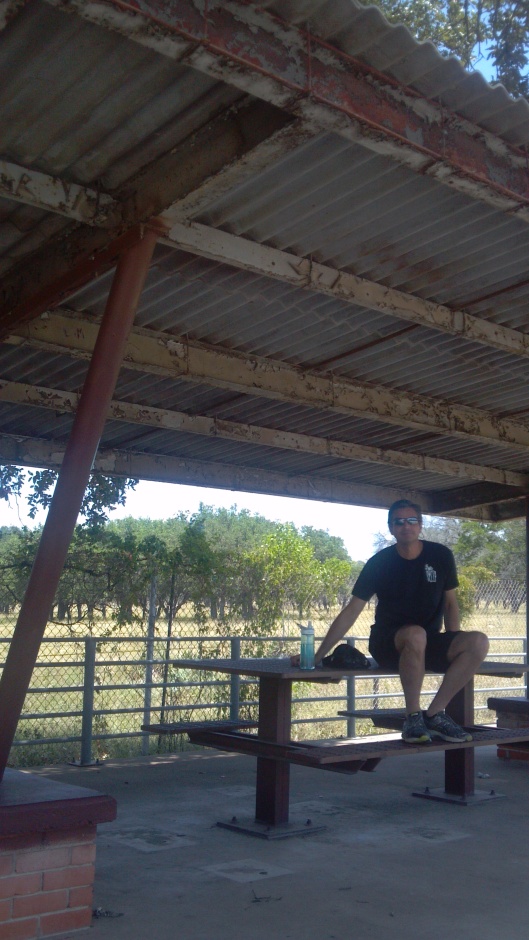 When we go places, I bring a soft-sided cooler we picked up in a Texas HEB store for $10. It’s got a divider in it so sealed stuff liked drinks can go underneath with the ice and supports the bag of vegan cheese or pack of Tofurkey or Just Mayo or whatever else you have in there. Personally, I can’t seem to go anywhere without salsa. I use it as a condiment, as an ingredient in rice dishes, as a snack. And sitting next to the salsa is usually at least one tub of hummus.
When we go places, I bring a soft-sided cooler we picked up in a Texas HEB store for $10. It’s got a divider in it so sealed stuff liked drinks can go underneath with the ice and supports the bag of vegan cheese or pack of Tofurkey or Just Mayo or whatever else you have in there. Personally, I can’t seem to go anywhere without salsa. I use it as a condiment, as an ingredient in rice dishes, as a snack. And sitting next to the salsa is usually at least one tub of hummus.

Depending on the length of your trip, you may also want to bring along a campstove. We take a big propane Coleman stove on most trips because propane is cheap and easy to find. For trips where space is premium, we have a small butane cookstove. With a pack of aluminum cake pans, I can make rice dishes, heat up beans, saute veggies, cook potatoes, and more.
Our first stop on road trips with an air travel component is to unpack the cooler and find a grocery store to stock it.
The key to making road-side eating seem like a fun adventure instead of a poor chore is to use imagination and flair beyond PB&J (unless you really really like PB&J). For example, if you didn’t eat all your potatoes an veggie sausage the night before, you could heat up the leftovers with a can of baked beans while you smash an avocado and some salsa together as a chip dip. Plenty of food for lunch and leftover dip for later in the day when you’re still hours from your destination and you need a snack.
Overall, if your supplies and food are well-organized, you can pull into a nice rest area, heat up something, eat, wash up, and be back on the road faster than it would take to get lunch in a diner.
2. Go camping.
I love camping. I really do. I’m not saying that because I just like having a beautiful place to sleep for half or a third — even a fourth — the cost of a nearby hotel room. I genuinely like being out in nature. I like hearing bugs and birds and the wind blowing through the trees.
I also like waking up to views I can’t get from a hotel (or can’t afford).
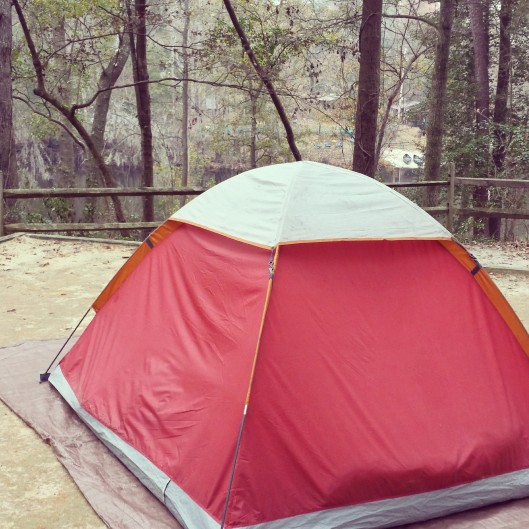 A good tent is a good tent. (Note: “good tent” may vary based on need. I don’t take mine on long hikes or suspend it from cliffs. It’s not designed for that. It’s also not big enough for more than two adults. It has, however, held up for roughly twenty years and it’s been used in Arizona, New Mexico, South Carolina, and all over Florida.) For my purposes, a good tent is lightweight but durable. It’s easy to set up and take down. (Some newer tents have a “key” design and poles that don’t line up to the stake holes and they’re frankly too much of a design mess to be setting up at 10pm in near total darkness after driving all day.) It fits back in its bag easily and the whole thing fits in a suitcase or small tub for shipping (tip 4).
A good tent is a good tent. (Note: “good tent” may vary based on need. I don’t take mine on long hikes or suspend it from cliffs. It’s not designed for that. It’s also not big enough for more than two adults. It has, however, held up for roughly twenty years and it’s been used in Arizona, New Mexico, South Carolina, and all over Florida.) For my purposes, a good tent is lightweight but durable. It’s easy to set up and take down. (Some newer tents have a “key” design and poles that don’t line up to the stake holes and they’re frankly too much of a design mess to be setting up at 10pm in near total darkness after driving all day.) It fits back in its bag easily and the whole thing fits in a suitcase or small tub for shipping (tip 4).

3. Mix up camping, motels, and nicer hotels. (And look for deals and discounts.)

Some places don’t have campgrounds or national parks. Some places are too cold, too hot, or too urban for camping to be an option. Sometimes you want to be in town or you’re in a hurry or whatever.
My sister goes to a lot of conferences for work, so she has boatloads of points and rewards for certain hotel chains. She can usually find a good deal on one in any city and if not, she collects the points to use later. My friend has a rewards credit card and collects points to spend on other travel because she loves travel, high-end things, and paying off her cards before the 30th of every month. Maybe you’re a family and participate in one of the programs through the low-end chains (like Motel 6, Super 8, Choice, etc.). And Hotels.com has a rewards program for frequent users.
Me? I’m not good at any of that and I’m not crazy about chains. I want each experience to be different. And I check everywhere (from the nicest 5-start resort to the skeeviest motel) for bed bugs and exceptionally gross stuff before I put down my bags. I like boutique hotels, small B&Bs, hometown inns, and roadside motels and motor courts with neon signs older than I am.
Here’s the thing about non-chains and regional (as opposed to national) chains: You have to do a little research. Sure, you might find a Best Western that looks like the set of a horror movie and you might find another that looks like a Westin, but for the most part they all look the same and they look the same as every Holiday Inn, Ramada, and converted HoJo on the same exit ramp.
Researching smaller places:
– Read all the reviews you can find, but take them with a grain of salt. If you’re the kind of person who needs a room to look like it was just built yesterday and scrubbed to surgical standards, this isn’t an adventure for you. If a person’s complaining about the thread count of the sheets or that the carpet has a few stains, you have to decide if that’s a deal breaker for you. Me? If I’m staying one night, I don’t care if the sheets aren’t Egyptian cotton as long as they’re clean. Carpet? Is it just old (cause it’s not like I’m eating off it), or is the stain from a triple homicide last month? Is that picture of “bed bugs” in the review actual bed bugs or just ants? (Related, someone freaking out over a couple of ants in a hotel room in Florida isn’t being taken seriously by me. It’s Florida. It has bugs. Everywhere.)
– Use Google Earth or Street View to “walk” the area around the place. Keep in mind that a sketchy area shot on a bright sunny day may look safer than it is and a lovely part of town may look sketchier if Google drove through on an overcast day. Look at what’s around the place you’re thinking of staying in. Look at the outside of the building. Does it have natural barriers to keep guests safe (things like vegetation at the edge of the property or set on the lot at an angle that keeps the lot well lit or hard to wander into) or have they built up obvious fences with barbed wire like an impound lot? (Don’t stay at the impound lot. You’re just as safe catching a nap in the parking lot of a truck stop.)
– Use social media to see what kinds of pictures people post and what kinds of people post them. If you want a quiet, relaxing night but most of the pictures are from large groups of college kids doing bong hits in their room, you probably want to pick another place. If you’re a bunch of twenty-somethings looking to hang out late by the pool, maybe the place that’s all grandparents and toddlers on Facebook isn’t for you.
– Keep your sense of adventure. Did I reroute a whole trip so I had an excuse to stay in a Clown Motel? Yes. Yes, I did. And because of it we found an awesome old cemetery and mining park. (That mining park is so damn cool.) Did I drive through sleet and snow, past multiple good quality chain hotels to stay in the Wigwam Motel the first time? Yes. Absolutely. Because why stay in a box when you can stay in a giant concrete tee pee? Seriously, why?
4. Ship stuff ahead of time if you’re flying.
If you’re planning a week or two on the road and you’re camping and cooking, there are things that are either too heavy to put in your luggage without paying crazy fees, would take up too much space without you having to wear the same outfit the whole trip, or would cause the TSA to jump you.
That leaves you with two options: stock up when you get there (which is necessary for things like propane, butane, lighters, etc.) or ship it out ahead of you. A plastic tub shipped parcel post is generally cheaper than paying for an extra or over-weight suitcase, depending on just how much is in it and how far it’s going. (Check with your airline. When we fly Southwest, that extra bag each holds almost everything we need.)
Just make sure the container you ship in will fit in your rental once you get there.
5. Reduce, reuse, recycle.
It’s not just good environmental stewardship. It’s good for the budget.
Two years ago, we were buying stuff for a trip and had to chose between a mixed-box of plastic utensils for $6 or a four-pack each of metal spoons, forks, and knives for $3. The extra $3 went toward a small bottle of dish soap and a sponge. The mini soap is still in a side-pocket of the cooler along with the sponge and we refill the bottle whenever it gets low. The silverware isn’t pretty, but it’s been used on many camping trips and taken along with a lot of boxed lunches. Even better, if you have older silverware (maybe that half a set from when you first moved out) that isn’t part of your every day set (in case it gets lost along the way), or you have a thrift shop that sells old utensils on the cheap you can find reusable serving spoons or big forks to use instead of grill tongs.
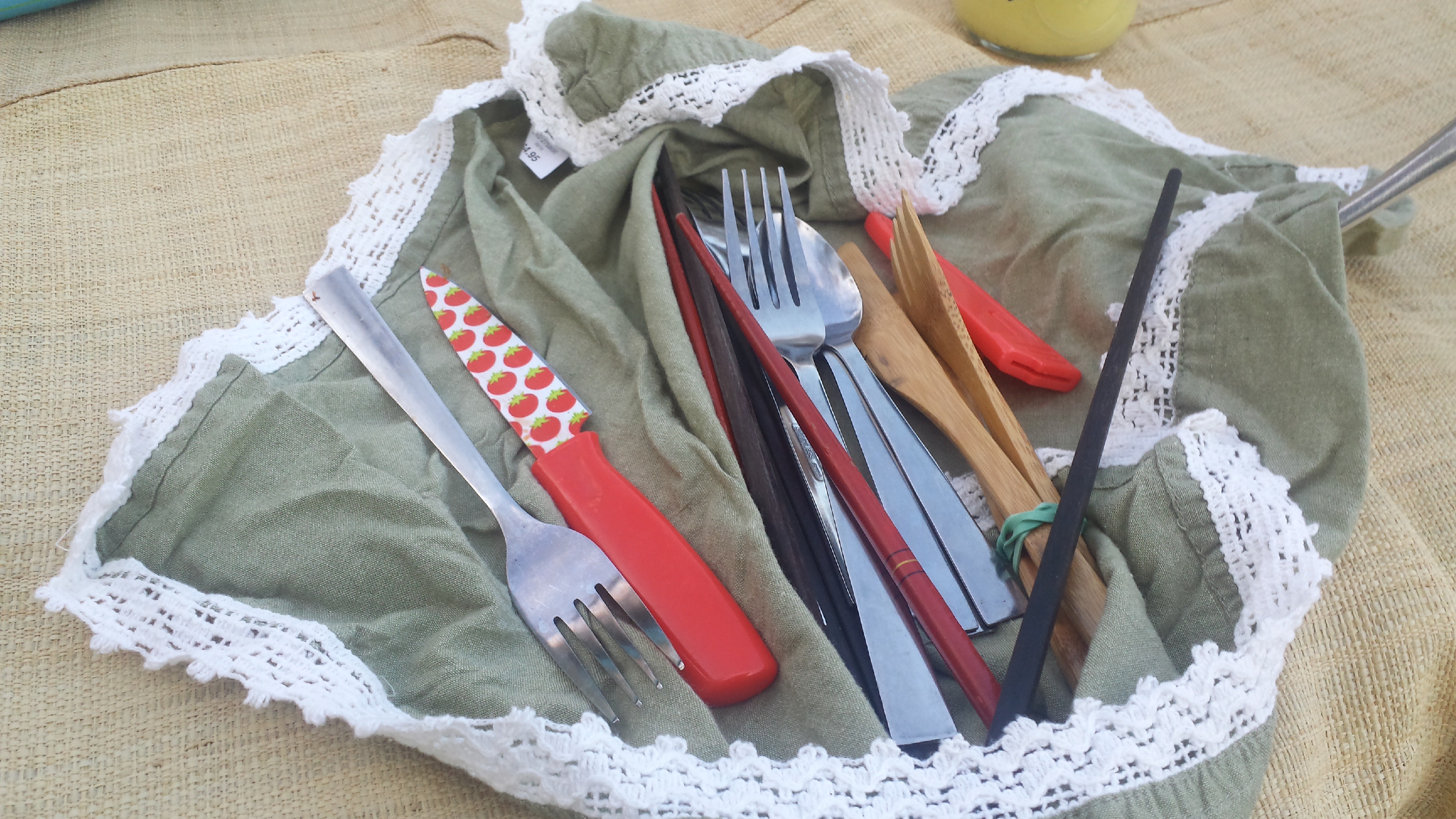
Then again, maybe you already have a bamboo set. I perpetually lose mine; I probably need a set for every purse and backpack I own. Bamboo doesn’t hold flavors, cleans up easily, doesn’t conduct heat well so it’s great for use with the cookstove.
Stainless steel to-go containers, tin or bamboo plates, and other earth-friendly items are great long-term investments. Don’t have that kind of cash? a set of plastic plates from a dollar store that you wash and reuse is still loads better than disposable plastic or styrofoam.
Travel mugs, and refillable water bottles can be taken through security (if empty) at airports and used all along the road. Most truck stops, a lot of gas stations, and even many coffee shops will give you a discount for bringing your own mug. Camelbak, Brita and others sell refillable bottles with filters to make tap water tastier. Stainless steel is a classic. Durable, easy to clean, you can’t go wrong with a good water bottle. Besides, disposable sucks.


